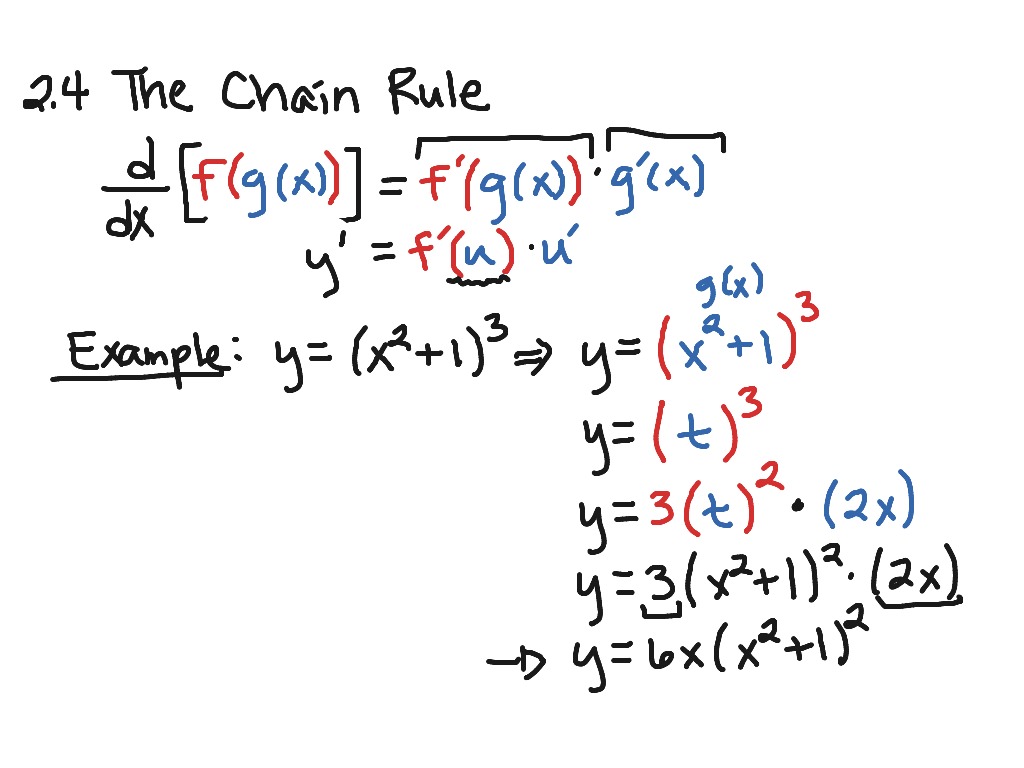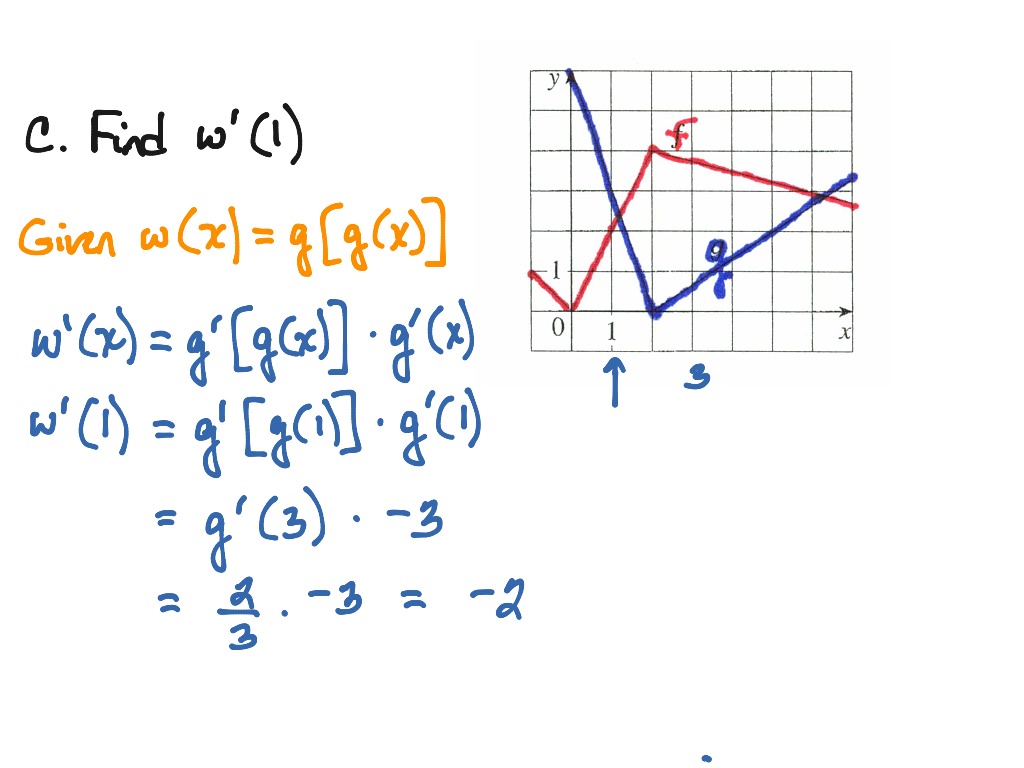


CHAIN RULE CALCULUS PRO
Only the derivatives of composite functions are found using the chain rule. The chain rule can be a tricky rule in calculus, but if you can identify your outside and inside function youll be on your way to doing derivatives like a pro Remember to put the inside. It helps us to find the derivative of composite functions such as (3x 2 + 1) 4, (sin 4x), e 3 x, (ln x) 2, and others. Geometrically, it is perpendicular to the level curves or surfaces and represents the direction of most rapid change of the function. The chain rule is one of the basic rules used in mathematics for solving differential problems. However, we rarely use this formal approach when applying the chain rule to specific problems. In the following discussion and solutions the derivative of a function h(x) will be denoted by or h(x). It is a vector field, so it allows us to use vector techniques to study functions of several variables. The chain rule is a rule for differentiating compositions of functions. The gradient is one of the key concepts in multivariable calculus. The same thing is true for multivariable calculus, but this time we have to deal with more than one form of the chain rule. If y f(g(x)), then as per chain rule the. In single-variable calculus, we found that one of the most useful differentiation rules is the chain rule, which allows us to find the derivative of the composition of two functions. The version with several variables is more complicated and we will use the tangent approximation and total differentials to help understand and organize it.Īlso related to the tangent approximation formula is the gradient of a function. In differential calculus, the chain rule is a formula used to find the derivative of a composite function. When two functions are composited, normally the result is too complex.


CHAIN RULE CALCULUS SERIES
Partial Derivatives Part B: Chain Rule, Gradient and Directional DerivativesĪs in single variable calculus, there is a multivariable chain rule. The chain rule is a rule of differentiation that allows the derivative to be taken when one function is applied to another. Visualizing the chain rule and product rule Chapter 4, Essence of calculus 3Blue1Brown 5.01M subscribers Subscribe 1.5M views 5 years ago 3Blue1Brown series S2 E4 A visual explanation of what. H &= (W_1x+b_1)\Big)x^T \cr\crįor the trace/Frobenius and elementwise/Hadamard products, respectively.2. Now let's define some variables and their differentials The chain rule provides us a technique for finding the derivative of composite functions, with the number of functions that make up the composition. We’ll start by differentiating both sides with respect to (x). Let's use the convention that an upppercase letter is a matrix, lowercase is a column vector, and a greek letter is a scalar. Using the chain rule from this section however we can get a nice simple formula for doing this. Rather than the chain rule, let's tackle the problem using differentials.


 0 kommentar(er)
0 kommentar(er)
